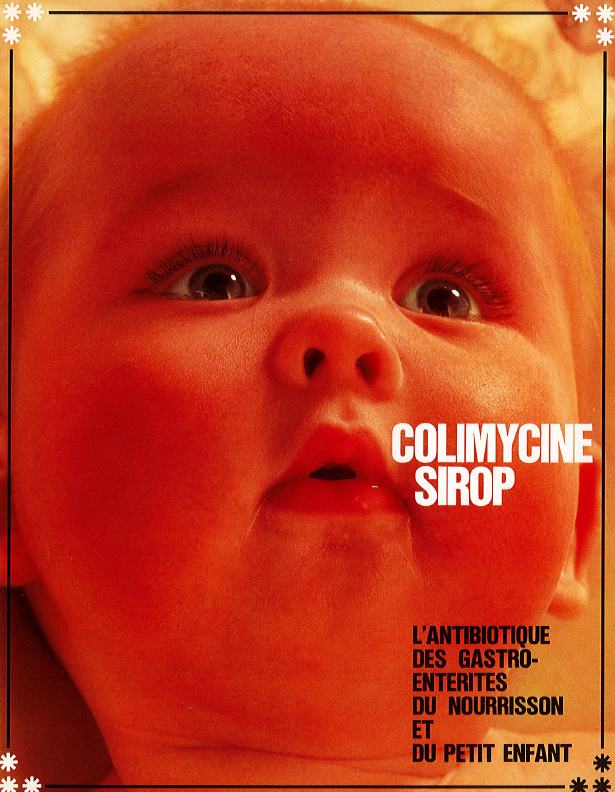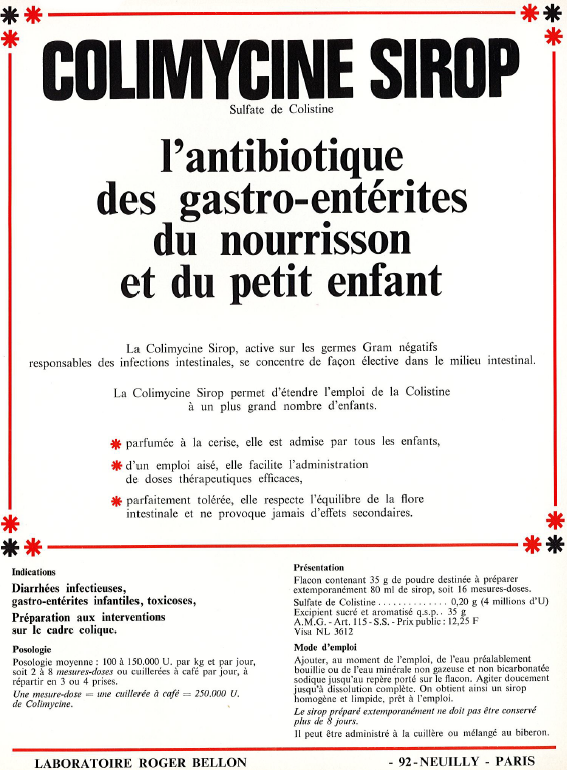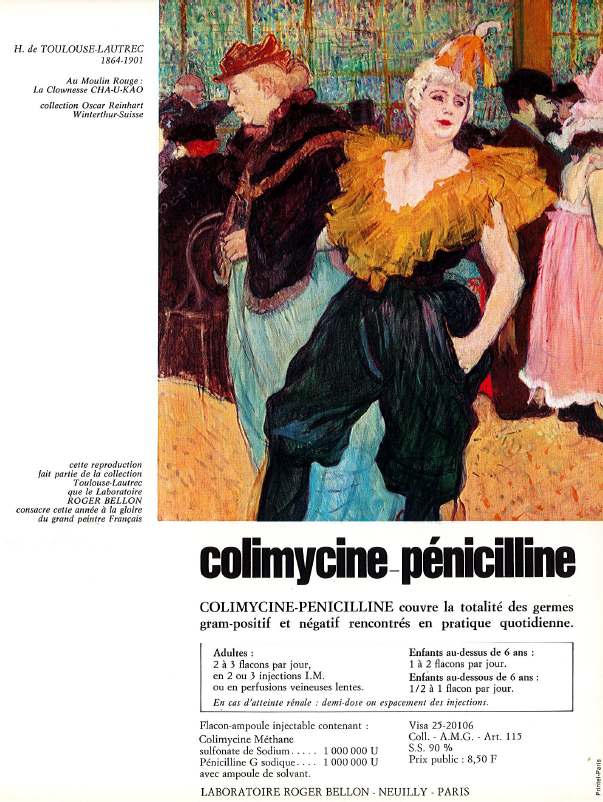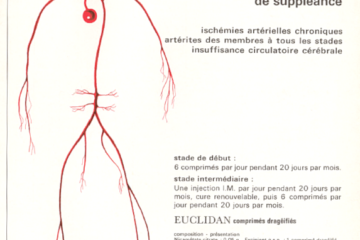Colistin (the active principle of Colimycine®) is an antibiotic belonging to the polymyxin family, used to treat a variety of bacterial infections in children and adults. It is a cyclic polypeptide isolated initially from a fermented broth of Bacillus colistinus Koyama in the early 1950s in Japan. The drug colimycine® has been used as a syrup in infants and young children to treat gastro-enteritis. It was used also in combination with penicillin G to treat infections associated to respiratory pathologies in adults. In fact, colistin can be combined with a variety of other antibiotics (tetracyclins, aminoglycosides, etc) to combat bacterial infections. The used of colistin alone is not recommended because it can easily induce bacterial resistance. Colistin has been shown to interact with the bacterial cytoplasmic membrane, changing its permeability. It disrupts the bacterial cell membrane through a detergent-like mechanism. In medicine, the product has been largely abandoned to favor other, less toxic antibiotics. Colicymine has been suspected to induce neurological symptoms including dizziness, visual disturbances, vertigo, confusion, and hallucinations. But the interest for the product has been revived in recent years with the emergence of multidrug-resistant (MDR) microorganisms. Novel combinations of colistin with diverse lipo- or glyco-peptide antibiotics are being evaluated. Nowadays, colistin is often considered a last-resort antimicrobial agent, used in combination with other drugs to treat multidrug-resistant infections, but its nephrotoxic potential raises concerns. Colistin (polymyxin E) is often employed as a final option in treating infections by the Gram-negative bacterium Pseudomonas aeruginosa, responsible for nosocomial infections. The drug is used in veterinary medicine, notably to treat diseases caused by the Escherichia coli, such as colibacillosis in piglets.







